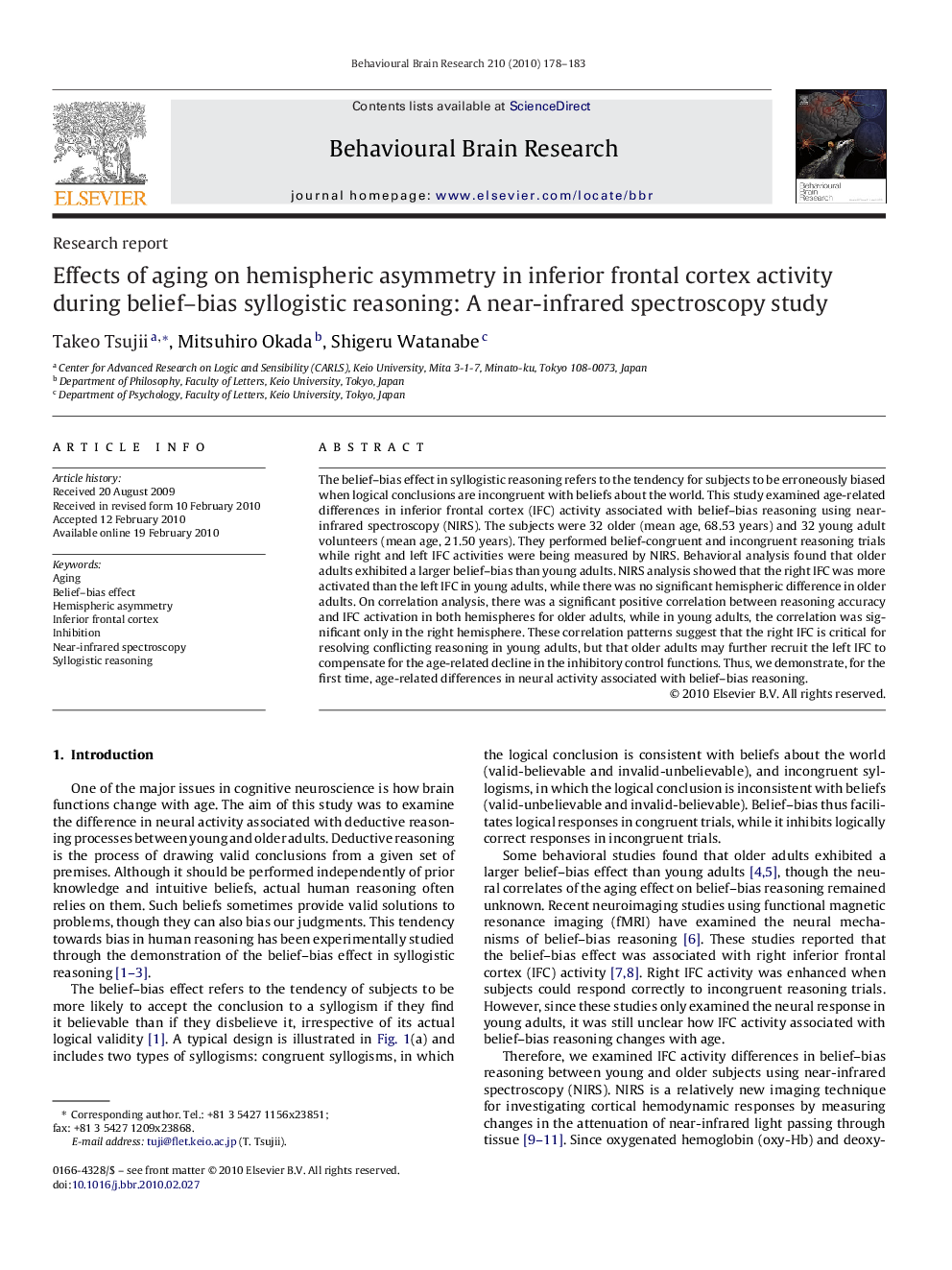| Article ID | Journal | Published Year | Pages | File Type |
|---|---|---|---|---|
| 4313898 | Behavioural Brain Research | 2010 | 6 Pages |
The belief–bias effect in syllogistic reasoning refers to the tendency for subjects to be erroneously biased when logical conclusions are incongruent with beliefs about the world. This study examined age-related differences in inferior frontal cortex (IFC) activity associated with belief–bias reasoning using near-infrared spectroscopy (NIRS). The subjects were 32 older (mean age, 68.53 years) and 32 young adult volunteers (mean age, 21.50 years). They performed belief-congruent and incongruent reasoning trials while right and left IFC activities were being measured by NIRS. Behavioral analysis found that older adults exhibited a larger belief–bias than young adults. NIRS analysis showed that the right IFC was more activated than the left IFC in young adults, while there was no significant hemispheric difference in older adults. On correlation analysis, there was a significant positive correlation between reasoning accuracy and IFC activation in both hemispheres for older adults, while in young adults, the correlation was significant only in the right hemisphere. These correlation patterns suggest that the right IFC is critical for resolving conflicting reasoning in young adults, but that older adults may further recruit the left IFC to compensate for the age-related decline in the inhibitory control functions. Thus, we demonstrate, for the first time, age-related differences in neural activity associated with belief–bias reasoning.
